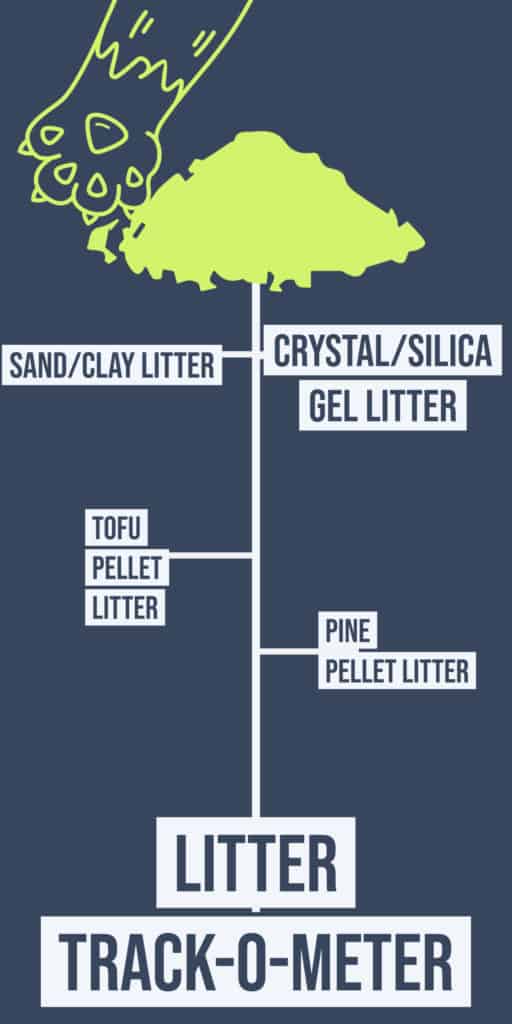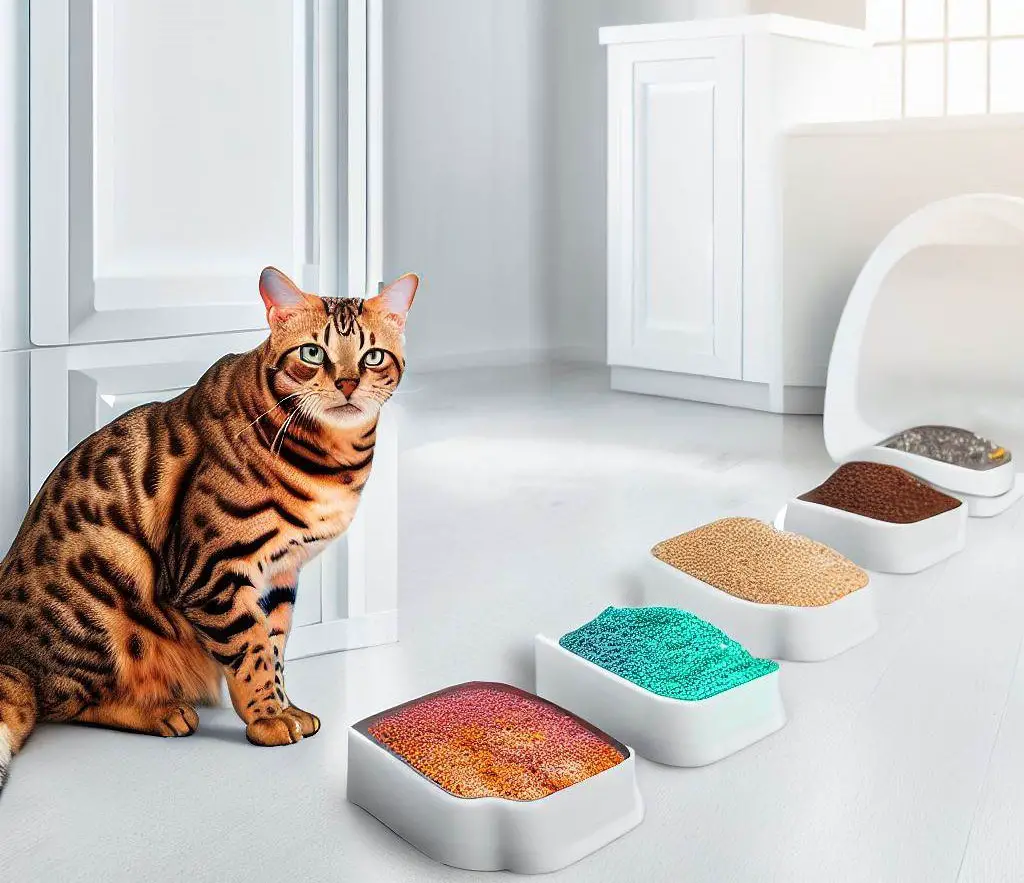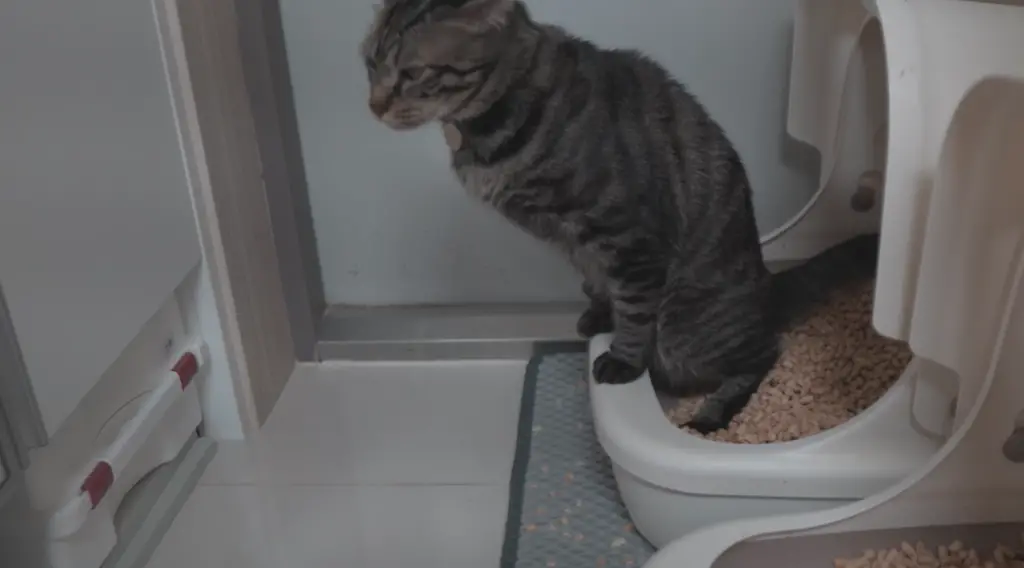Are you tired of constantly cleaning up after your feline friend and dealing with unpleasant odors? Choosing suitable cat litter can be a game-changer, but with so many litter types available, it’s hard to know where to start.

This comprehensive guide will explore the pros and cons of various litter types, from clumping clay to litter that doesn’t spread around the home like the plague. You’ll discover the differences in odor control, tracking, maintenance, and factors to consider when picking the perfect litter for your cat.
Factors to Consider When Picking Litter
When choosing the best litter for your cat, consider the following factors:
- Odor control: Consider how well the litter neutralizes odors, especially if you have a small living space.
- Absorbency: The litter should absorb liquids effectively to keep the litter box clean and dry.
- Texture: Cats can be particular about the texture of their litter, so choose one that is comfortable for your cat to walk on.
- Dust level: Low-dust litters are better for your and your cat’s respiratory health (less hassle to clean).
Litter Types: Pros & Cons
The following pros/cons chart is sorted from the least expensive to the most costly litter types (typically):
| Litter Type | Pros | Cons |
|---|---|---|
| Non-Clumping Clay Litter | – More affordable than clumping clay – Moderate odor control | – Limited odor control – Frequent complete litter dump/replacement is required – May not be as absorbent as other types |
| Clumping Clay Litter | – Easy to scoop and maintain – Good odor control – Widely available and affordable | – Can be dusty – Heavy and difficult to dispose of – Not eco-friendly; made from non-renewable resources |
| Pine Litter (Pine Litter Guide) | – Biodegradable – Good odor control with a natural pine scent – Lightweight and low dust | – It may not be as absorbent as other types – Some cats may not like the scent or texture – Sawdust accumulation requires daily sifting |
| Recycled Paper Litter | – Eco-friendly and biodegradable – Low dust and lightweight – Soft texture is gentle on cat’s paws | – Limited odor control – Pellets can become soggy quickly – Frequent complete litter box replacement required |
| Pelleted Paper Litter | – Eco-friendly and biodegradable – Low dust and lightweight – Soft texture is gentle on cat’s paws | – More expensive than clay litter – Dark color can make it challenging to spot dirty areas – Some people may be allergic to walnuts |
| Grass Seed Litter | – Good clumping ability and odor control – Lightweight and low dust – Soft texture is gentle on cat’s paws | – It may be more expensive than other options – Can be harder to find in stores – May not be as absorbent as clay-based litter |
| Corn Litter | – Good clumping ability and odor control – Low dust and lightweight – Made from renewable resources | – Some cats may be attracted to the smell and try to eat it – May not be as absorbent as clay-based litter – Susceptible to mold growth if not maintained properly |
| Wheat Litter | – Good clumping ability and odor control – Low dust and lightweight – Made from renewable resources | – Some cats may be attracted to the smell and try to eat it – It May not be as absorbent as clay-based litter – Can be more expensive than other options |
| Walnut Shell Litter | – Good clumping ability and odor control – Low dust – Made from renewable resources | – More expensive than clay litter – Dark color can make it difficult to spot dirty areas – Some people may be allergic to walnuts |
| Tofu Litter | – Good clumping ability and odor control – Low dust and lightweight – Flushable in small quantities | – More expensive than some other options – Some cats may be attracted to the smell and try to eat it – Not as widely available as other litter types |
| Silica Gel (Crystal) Litter | – Excellent moisture absorption and odor control – Less frequent litter dump/replacement required – Low dust and lightweight | – More expensive than clay-based litter – May be uncomfortable for some cats to walk on – Not biodegradable |
Litter Types: Properties & Maintenance
The following maintenance and properties chart is sorted from the least odor-controlling to the best odor-controlling:
| Litter Type | Clumping/Non-Clumping | Scoop | Dump & Replace Litter |
|---|---|---|---|
| Recycled Paper Litter | Non-clumping | Daily (remove feces) | Weekly |
| Pelleted Paper Litter | Non-clumping | Daily (remove feces) | Every 2 weeks |
| Non-Clumping Clay Litter | Non-clumping | Daily (remove feces) | Weekly |
| Walnut Shell Litter | Clumping | Daily (remove clumps and feces) | Every 2-4 weeks |
| Corn Litter | Clumping | Daily (remove clumps and feces) | Every 2-4 weeks |
| Wheat Litter | Clumping | Daily (remove clumps and feces) | Every 2-4 weeks |
| Grass Seed Litter | Clumping | Daily (remove clumps and feces) | Every 2-4 weeks |
| Tofu Litter | Clumping | Daily (remove clumps and feces) | Every 2-4 weeks |
| Pine Litter | Non-clumping | Daily (remove feces & sift) | Never* |
| Clumping Clay Litter | Clumping | Daily (remove clumps and feces) | Every 2-4 weeks |
| Silica Gel Litter | Non-clumping | Daily (remove feces & stir to distribute urine) | Every 3-4 weeks |
Please note that this ordering is a general guideline based on common litter characteristics. Odor control can vary between different brands and formulations of each litter type. For more on odor control strategies, especially in indoor environments, read more here!
*Pine Litter rarely needs complete litter changes because of how to clean litter, and soiled litter is separated (assuming you have a litter box made for pine litter). The soiled litter becomes sawdust which gets sifted down to the
Litter Tracking: A Huge Problem


When talking about litter, it’s impossible not to mention litter tracking.
Litter tracking refers to the unintentional spread of cat litter outside the litter box due to a cat’s natural movement and activities. When cats use their litter box, litter granules can get stuck to their paws or fur, carrying them with them as they walk around your home. This can lead to a messy and unclean environment and increased cleaning efforts for pet owners.
Some types of cat litter are more prone to tracking than others. For example, lightweight and fine-grained litters are more likely to stick to a cat’s paws and be tracked around the house. To reduce litter tracking, you can:
- Choose a low-tracking litter: Opt for larger or heavier granules, which are less likely to stick to your cat’s paws.
- Use a litter mat (check the recommended cat supplies for examples): Place a mat to capture litter under and around the litter box. These mats have textured surfaces that help remove litter from your cat’s paws as they exit the box.
- Maintain litter box hygiene: Regularly clean the litter box, scooping out waste daily and replacing the litter as needed. A clean litter box helps minimize the litter stuck to your cat’s paws.
- Opt for a litter box with high sides or a hood (check out our recommendations): High-sided or hooded litter boxes help contain litter and minimize the amount that escapes the box when your cat digs or kicks litter around.
Litter Types: Top 3 Litter (My Recommendations)
Cat owners and experts generally observe that many cats prefer finer-grained litters due to their soft texture, which allows them to dig and bury their waste more easily.
However, again, all cats are individuals and are able to adapt and use other litter types. Just be sure to transition slowly if changing from one litter type to another!

With that out of the way, here are the litter types that will fit the bill for most cat owners:
- Clumping Clay Litter – Recommended for the average cat owner who wants a good balance between odor control, easy maintenance, and affordability. This popular choice is widely available and suitable for most cats.
However, it’s not the most eco-friendly option and tracks a lot. - Silica Gel (Crystal) Litter – Recommended for cat owners who prioritize excellent odor control and low maintenance. Silica gel litter requires less frequent litter box changes and produces low dust.
It’s a great option for those with a busier lifestyle, but it’s more expensive than some other types (and also has the same issue with tracking). - Pine Litter – Recommended for eco-conscious cat owners who want biodegradable litter with minimal tracking. Additionally, pine litter provides reasonable odor control with a natural pine scent, with the added benefit of being quite affordable.
These litters may be ideal for those that hate cleaning up litter around the home and want an efficient cleanup process (never having to dump out the whole litter in exchange for a bit of sifting).
Why Use Pellets?
Although there is scientific evidence suggesting that cats may prefer litter substrates with smaller granules. A study published in the Journal of Veterinary Behavior in 2018 investigated cats’ preferences for different litter substrates by offering them a choice between various substrates, including clay, silica granules, and wood pellets.
The researchers found that cats clearly preferred finer-grained materials like clay and silica, with clay winning out over silica.
If we know that cats have a preference for smaller granules, why use larger litter types such as pine litter?

There are two main reasons why cat owners might choose litter pellets over smaller granules like clay litter, even though some cats might prefer finer-grained materials:
- Lower dust levels
- Less tracking
Again, as mentioned above, the thing about finer-grained litter is that the softer and more finely-grained it is, the more it will track and spread, which is incredibly annoying to deal with, especially if you’re living in a smaller living space.
What Litter Do I Use?
As someone who has previously lived in quite a small living environment with my cats, I have always used pine litter due to the abovementioned benefits.
Even now, in a larger indoor living area, I have still stuck to pine litter due to how efficient it is to use. Cleaning is quick, hygienic, and better for you and your cats with a good litter box setup.
 Feline Pine Cat Litter
Feline Pine Cat Litter
Pine litter is the only way to go to prevent tracking all over the apartment. It's natural, cheap, and incredibly easy to clean and manage. Use with a sifting litter box like the Purina Hooded Litter Box!
